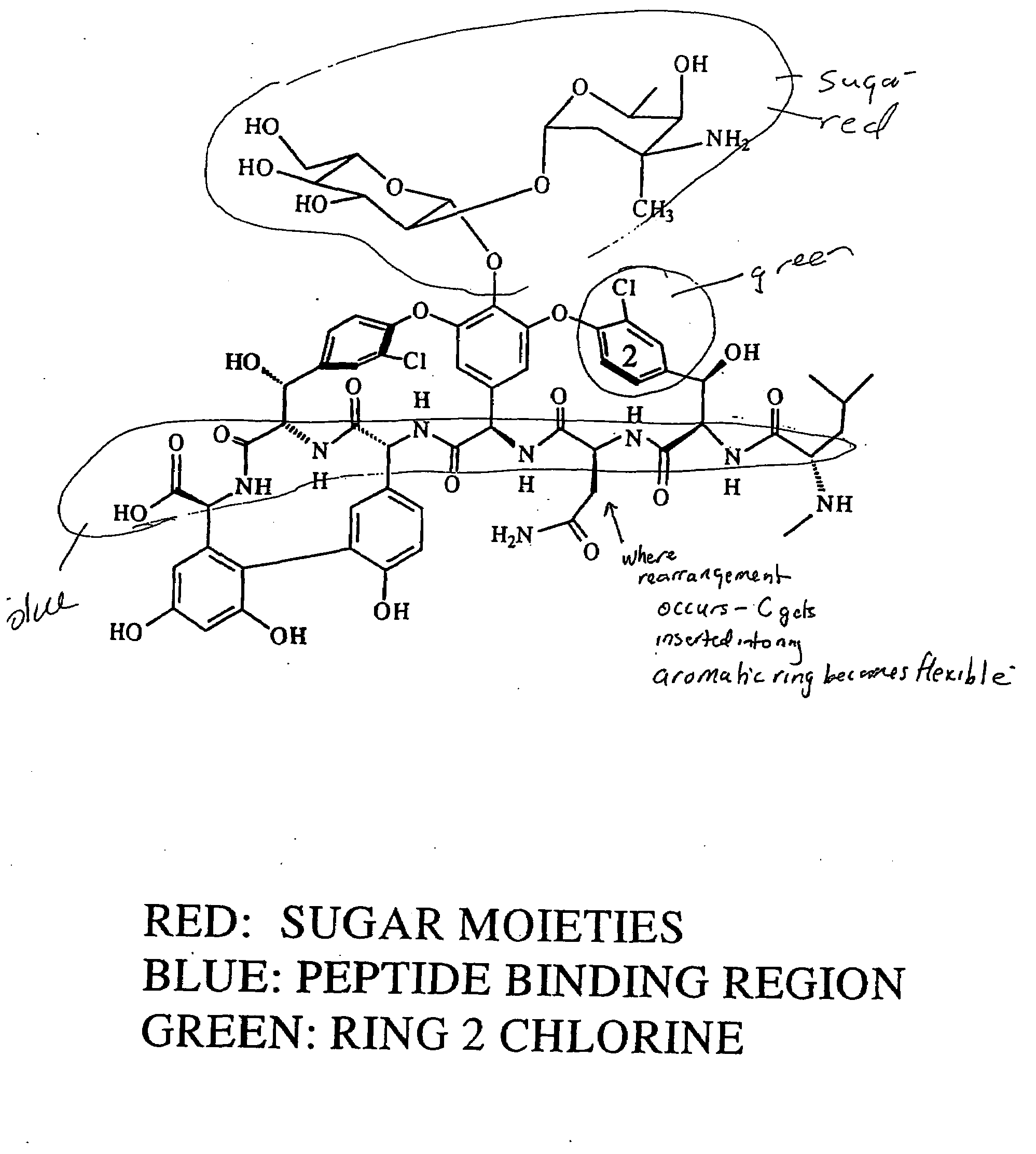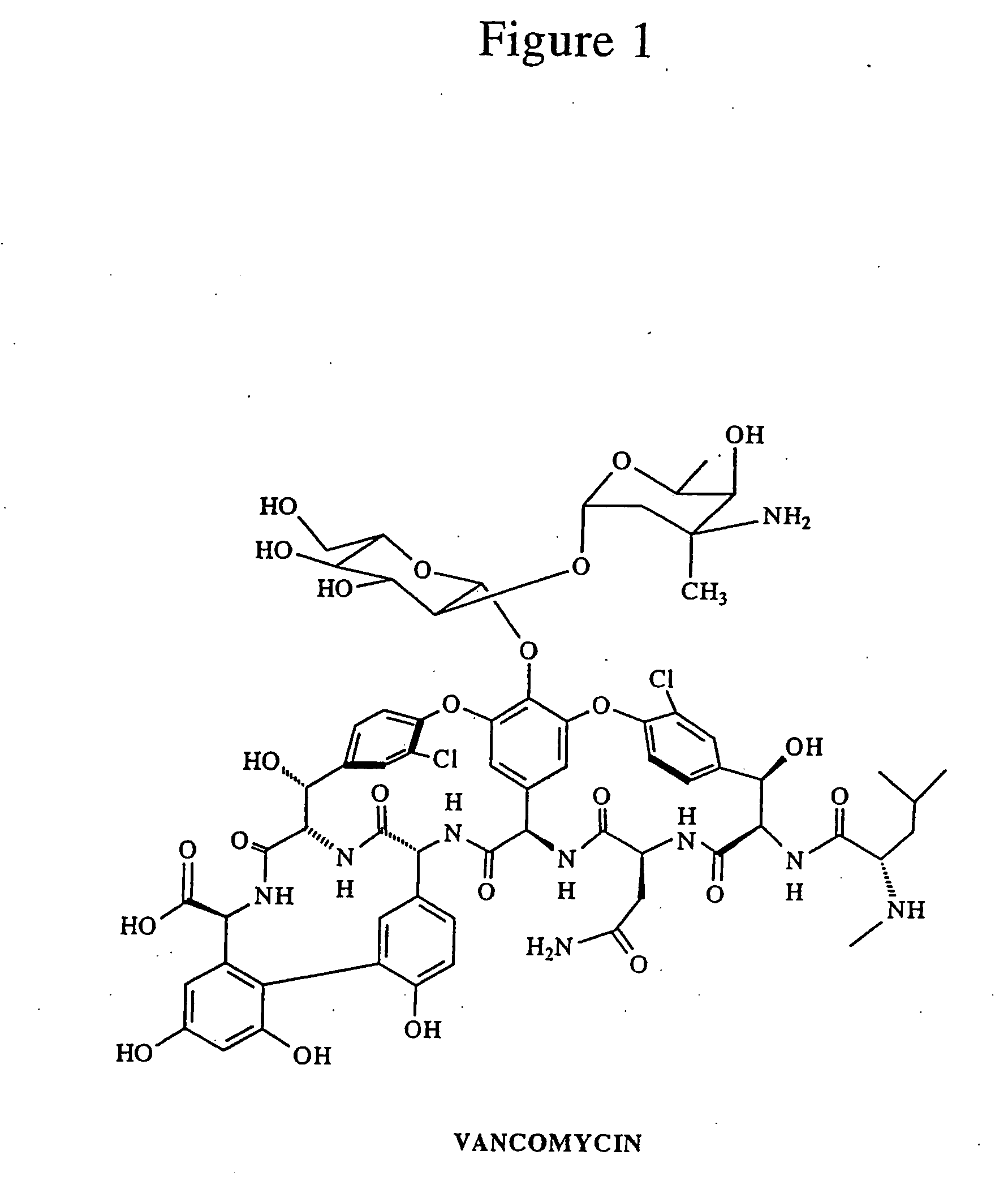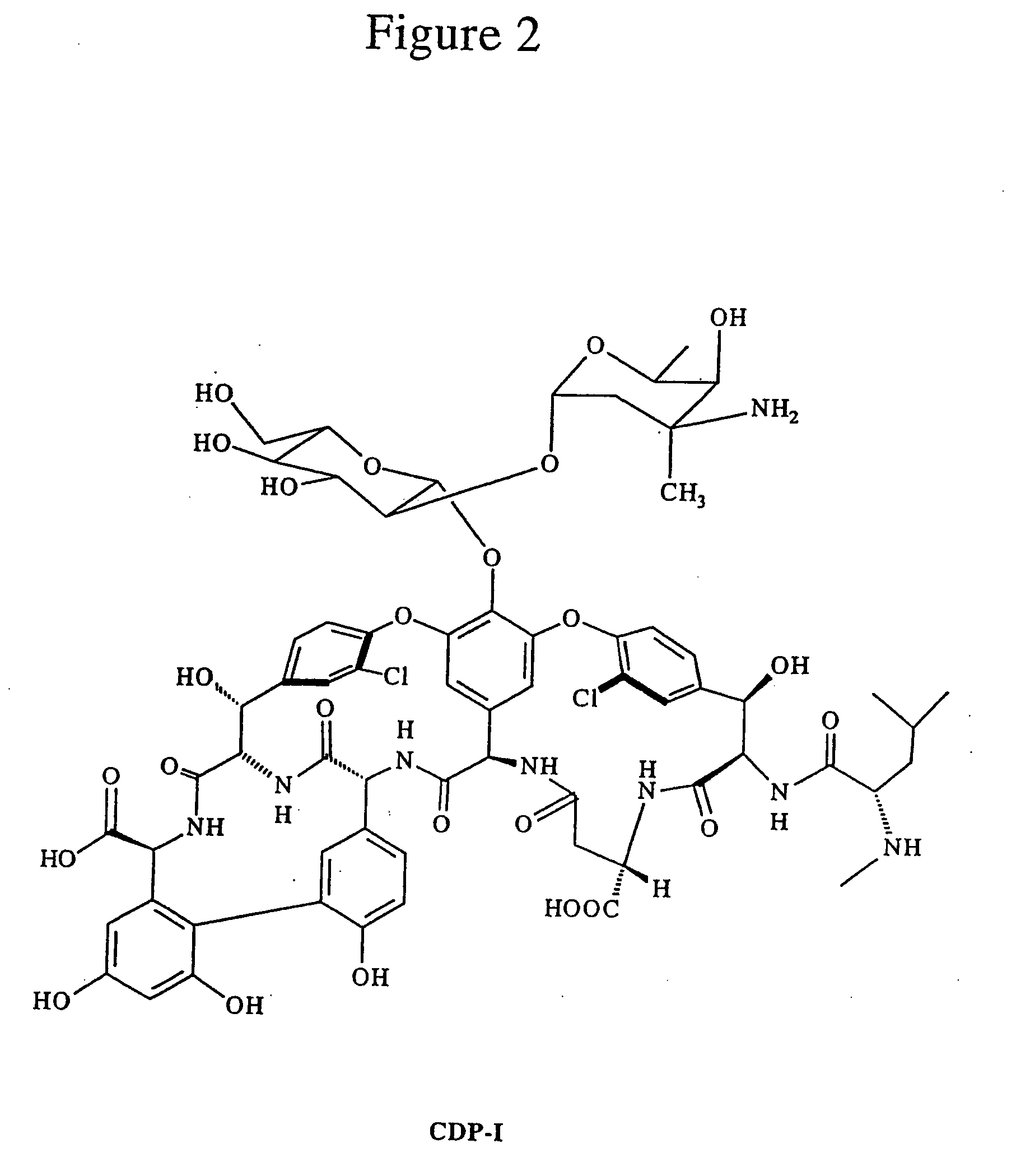Reagents and methods for the detection and quantification of vancomycin in biological fluids
a technology of biological fluids and reagents, applied in the field of quantitative vancomycin in test samples, can solve the problems of tripeptide interference with immunoassay techniques, vancomycin instability in aqueous environment, nephrotoxicity and autotoxicity,
- Summary
- Abstract
- Description
- Claims
- Application Information
AI Technical Summary
Benefits of technology
Problems solved by technology
Method used
Image
Examples
example 1
Synthesis of Vancomycin Immunogen
a) Synthesis of methyl-4-amino butyrate
[0100]4-amino butyric acid (5.00 g, 48.5 mmol) is taken in a 200 mL round bottom flask. Dimethoxy propane (80 mL, 65 mmol) is added to the flask with stirring. Concentrated hydrochloric acid (15 mL) is added to the reaction and stirred at room temperature overnight. Solvents are removed under reduced pressure on a rotary evaporator without heating. The solid is dissolved in a minimum amount of MeOH and is reprecipitated with ether. The precipitated solid is filtered under suction and washed with Et2O (2×50 mL). The solid (yield: 6.9 g (96%)) is then dried under vacuum.
[0101]1H NMR of the free amine (CDCl3): 2.1 (quintet, 2H), 2.5 (triplet, 2H), 3.2 (broad triplet, 2H), 3.7 (singlet, 3H), 8.1 (singlet, 2H).
b) Synthesis of vancomycin-amino butyrate Derivative
[0102]Vancomycin (500 mg, 0.34 mmol) base is taken in a 25 mL round bottom flask. DMSO (4 mL) is added and stirred, with warming as necessary, until a clear s...
example 2
Production of Anti-Vancomycin Antibody 15-109-592
[0109]A female, 6-8 weeks old, RBF / DnJ mouse (Jackson Laboratories, Bar Harbor, Me.) is immunized with the vancomycin immunogen of Example 1 emulsified with Freund's adjuvant (Difco, Detroit, Mich.). The primary immunization is administered with Freund's Complete Adjuvant and subsequent boosts with Freund's Incomplete Adjuvant. The animal boosting interval for this long term immunized animal is at weeks, 1, 3, 5, 12, 17 and 24 with the respective dosage level at 25, 12.5, 12.5, 10, 10 and 10 μg per animal at one subcutaneous site and one intraperitoneal site for the first three boosts and at two subcutaneous sites each for the last three boosts. Periodically, bleeds are made to confirm that an antibody response is developing. The animal was allowed a 7 week rest period before a 10 μg boost was administered to the spleen 3 days prior to fusion.
[0110]On the day of the fusion, the mouse is euthanized by a quick cervical dislocation and t...
example 3
Synthesis of Vancomycinchlorotriazinylaminofluorescein Tracer
[0118]Vancomycin base (576 mg, 0.4 mmol, 1.5 eq) is dissolved in DMF (8 mL) (with warming if necessary to 40° C.) in a 50 mL round bottom flask with a wide mouth. A small pH electrode is inserted to monitor the pH of the reaction. A solution of dichlorotriazinylaminofluorescein HCL (DTAF; 132 mg., 0.26 mmol, 1 eq.) in DMF (2 mL) is added to the flask. The reaction turns orange-yellow and the pH dropped to 6.0±0.5 and is stirred overnight while maintaining this pH. Reaction products are monitored by analytical HPLC. After all the DTAF had been consumed DMF is removed under vacuum to about 2-3 mL. The remainder is purified by HPLC. Appropriate fractions are collected and the solvent is lyophilized to give an orange yellow powder (yield: 350 mg).
[0119]Analytical HPLC conditions are as follows. The column is 3.9 mm×300 mm C-18 (DYNAMAX C-18, Rainin) with a continuous gradient mobile phase (A=ammonium acetate; B=acetonitrile (5...
PUM
| Property | Measurement | Unit |
|---|---|---|
| Time | aaaaa | aaaaa |
| Time | aaaaa | aaaaa |
| Time | aaaaa | aaaaa |
Abstract
Description
Claims
Application Information
 Login to View More
Login to View More - R&D
- Intellectual Property
- Life Sciences
- Materials
- Tech Scout
- Unparalleled Data Quality
- Higher Quality Content
- 60% Fewer Hallucinations
Browse by: Latest US Patents, China's latest patents, Technical Efficacy Thesaurus, Application Domain, Technology Topic, Popular Technical Reports.
© 2025 PatSnap. All rights reserved.Legal|Privacy policy|Modern Slavery Act Transparency Statement|Sitemap|About US| Contact US: help@patsnap.com



